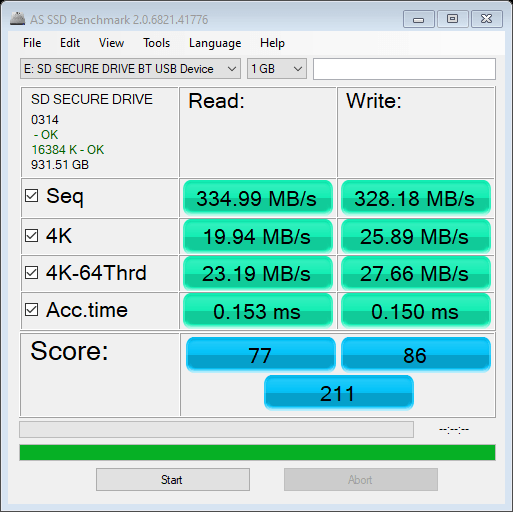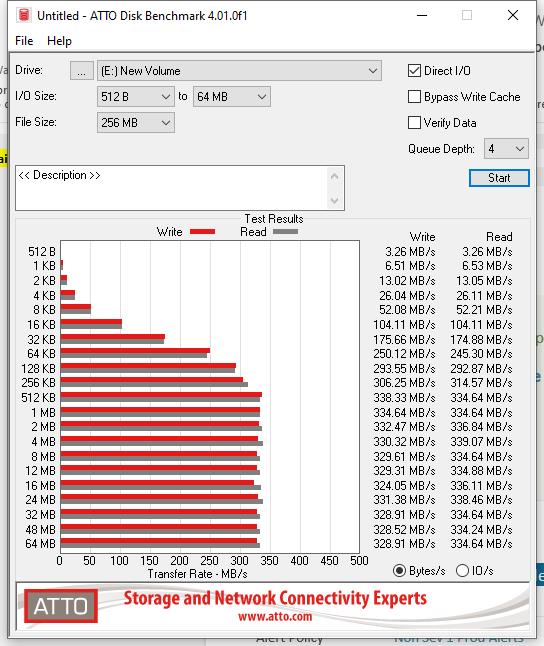SecureDrive® BT – Hardware Encrypted External Portable Drive
Performance and Conclusion
Due to real time hardware encryption secure drives such as the SecureDrive BT don’t fare too well on benchmark tests. In all fairness they have been built for a specific purpose in mind. That said, we wanted to see how the SecureDrive BT would perform in some commonly used benchark tools in the market.
Crystal DiskMark

While the results are nothing to brag about, it’s certainly impressive. In fact the SecureDrive BT performs on par with some conventional SSD drives with no hardware encryption at all.
AS SSD Benchmark

Again the scores are almost in line with what we noticed with Crystal DiskMark.
ATTO Disk Benchmark

ATTO disk benchmark tool is a popular freeware tool that shows the drive’s performance based on different file sizes. Here too the SecureDrive BT performs well throughout and validates the ratings given by SecureDrive at 355MB/s read and upto 333MB/s write.
Conclusion
The SecureDrive BT has successfully disrupted the status quo we have been accustomed to seeing with hardware encrypted devices. Among its most notable and innovative features include Secure Wireless User Authentication, Remote Management, 2 factor authentication and remote wipe capabilities. These truly make the SecureDrive BT an absolute must have if you value your data security.
The drive comes at a hefty price tag of US$559 for the 1TB SSD version and goes upto US$3,639 for the 8TB version. They do offer HDD options as well which start at US$285 for the 1TB version. Most general users will think twice with such an investment, however these products aren’t intended for the average Joe either.
Given the range of similar products we have tested in the past, the SecureDrive BT does take the crown for ease of use, performance and overall features offered. It’s an absolute recommendation from us if your budget fits.
| Table of contents |
| 1. Introduction |
| 2. SecureDrive® BT – Closer look |
| 3. SecureDrive® BT – Capabilities |
| 4. Remote Management Features |
| 5. Performance and Conclusion |

